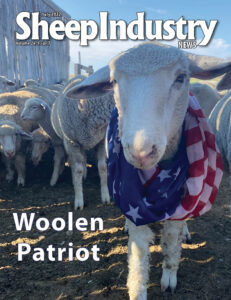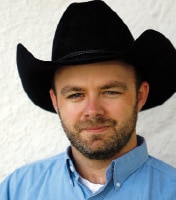Before King Coal reigned in the Appalachian Mountains of Eastern Kentucky – and surrounding areas – sheep were a common sight. Patrick Angel hopes the small ruminants can be a part of reviving the region as the country moves away from coal as a primary energy source.
The retired forester and soil scientist for the U.S. Department of the Interior devoted a lifetime to reclaiming areas used for surface mining of coal, mostly in his home state of Kentucky. And when he looks at the seemingly countless acres of reclaimed Appalachian Mountains land stretching from Pennsylvania to Alabama and encompassing eight states, he sees a grazing mecca that might just rejuvenate the area and the American sheep industry at the same time.
“The mountains of Eastern Kentucky are well known for their natural resources: timber, coal and natural gas,” Angel said. “But there is a new natural resource that is often forgotten or ignored, and that is the vast acreage of reclaimed land that has been surface mined. It’s been reclaimed specifically for hay and pasture lands. Much of the Kentucky and West Virginia coal fields look like the prairie lands of the Dakotas or Nebraska.”
The surface mining method known as mountain top removal “basically takes the top of a mountain two or three coals seams at a time,” according to Angel. What’s left is a plateau of gently rolling hills that provide ideal grazing opportunities for sheep.
“And the vast majority – in Kentucky we have 750,000 acres alone – is unused and ungrazed,” Angel said. “These are fragile environments that are quickly turning into jungles of invasive, non-native shrubs. The two things you can do on it are plant trees and graze small ruminants. Or, you can do both. As a retired forester and soil scientist, my goal was always to get more trees planted. But being a sheep farmer on the side, I look around at all of this wonderful grass and legume pasture and think, ‘Wouldn’t it be fun if we could put 1,200 sheep on this?’”
That would make for a sizeable operation in the Eastern half of the United States, but it’s just a drop in the bucket of the land’s potential. There’s no reason, Angel said, why the reclaimed lands couldn’t become home to large bands of range sheep similar to what the industry is used to in the Rocky Mountain region.
“Before a surface mine can be initiated, the landowner chooses their targeted post-mining land use. Most landowners throughout the region opted to have the land reclaimed to hay and pasture. Ironically, however, very few of these hay and pasture acres currently support livestock production,” wrote Angel and University of Kentucky Cooperative Extension Agent Will Bowling in a proposal that has caught the attention of leaders at both the U.S. Department of Agriculture and the Kentucky Department of Agriculture. “Several reasons contribute to this lack of utilization, but two of the foundational challenges both stem from mine soil compaction that is a relic of the reclamation process: the most commonly occurring forage species on surface mines are not palatable to cattle, and fence construction is prohibitively difficult.
“As a result of these inherent challenges, the vast majority of these mine-associated grasslands currently lie fallow and are quickly being populated by aggressive, non-native invasive plants. However, we believe an approach that embraces the existing conditions on these sites could lead to a financially successful and widely scalable model of agricultural production that would at the same time mitigate site conditions and control the spread of exotic plant species.”
Sheep have already proven their ability to grow and thrive in the environment as a number of the state’s sheep producers run flocks on reclaimed surface mine land already.
“Several years ago, my wife and I were looking to buy a farm and the one I bought might not have been that appealing to a lot of buyers, but I knew I wanted to run sheep on it,” said Keaton Smith, DVM. “I’ve always had a dream of raising sheep and in college I took a sheep production course under Dr. (Don) Ely. Then I went on to vet school and just loved working with small ruminants.
“Now, I’ve got 177 sheep on rotation and doing wonderful. The farm I bought had been abandoned for 10 years, but the sheep have improved my pastures exponentially. So, I’m really proud of what they’re doing on my farm. Because it was reclaimed strip mine land, it was cheaper. But I absolutely believe it will support my sheep very well. My goal is to grow the flock to around 300 ewes.”
The land works so well for grazing that Dr. Smith is able to put up 600 bales of hay a year while cutting behind the sheep in his rotational grazing system.
“And I use that hay to feed the flock through the winter, so I’m not having to buy feed,” he added. “Sheep and goats were just made for this land. Maybe I’m biased because I love raising sheep, but I see so much potential on this land that really isn’t being used for anything right now most cases. I believe it very easily could support large flocks of 10,000 to 12,000 sheep like you see out west.”
To prove that, Angel is working to develop a pilot project that will introduce a thousand or more sheep to reclaimed land.
“We want to create a demonstration project, using a similar concept to the one that exists in the Rocky Mountains,” Angel said. “For the first time, we’re talking about doing the same thing. What we need is to bring in a producer from somewhere out West to teach us how that model really works. We’ve got experience using guard dogs and herding dogs, but we don’t have experience using them on a thousand or five thousand sheep.”
The group is hoping to have its demonstration project up and running in 2023, but is working now to secure grant money for the project. In addition, Angel is looking for knowledge and expertise that might come from hiring a veteran Western producer to oversee operations in the year to come.
In early June, Angel and a steering committee met with a land agent for Kentucky River Properties – one of the largest land holding companies in the state. The company has committed to a lease of 5,000 acres as part of the demonstration project that Angel believes is essential to bringing this grand idea to fruition.
Another option for many of these reclaimed lands is the installation of solar arrays – an idea that would add even more value to growing sheep numbers in the area.
“We want to get the word out that this opportunity exists in the coal fields of poverty-stricken Appalachia,” Angel said. “There’s a variety of reasons to make this project work. We just need to get it started somehow. This would provide an opportunity to put these lands to use, to grow our local economies and to grow the American sheep industry substantially.”
As mentioned earlier, it would also allow the area to return to its early-day roots as a major sheep producing region.
“Before there was Kentucky Fried Chicken, there was Kentucky Spring Lamb,” Angel said. “At one point – from the late 1800s up until World War II – you could find Kentucky Spring Lamb in fine restaurants all over the East Coast. We were the second largest sheep producing state in the country at one time, and these mountain farms were known for producing high quality lamb.”
The project could prove successful throughout the region, not just Kentucky.
“This is an Appalachian coal field opportunity,” Angel said. “And that includes parts of several states: Alabama, Kentucky, Maryland, Ohio, Pennsylvania, Tennessee, Virginia and West Virginia. All of these places have had surface mining operations.
“This model would utilize economies of scale to access existing commodity chains, but success with this basic framework could create ancillary opportunities in the future, including the expansion of the sheep and goat industry, protection of lands susceptible to invasion by exotics, and green jobs creation in the face of a declining coal-based economy. We submit that this basic model could create new, sustainable wealth from assets and resources currently available within Central Appalachia.”




